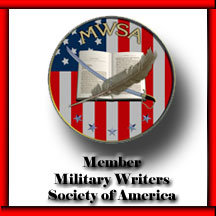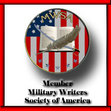|
"What is a map?" inquired the sergeant in his Oklahoma twang, swiveling his close-cropped head to lock eyes with us one by one. It was damp and chilly when we lined up at dawn with rifles and field gear; I had welcomed my field jacket. But now the Fort Ord sun was high and our fatigue shirts dripped with sweat from five miles of quick-time-march to this hilltop bleachers. "What is a map?" repeated Sergeant First Class Eugene F. Lawhorn. He wore a badge above the left breast pocket of his faded fatigue uniform, a tiny sterling flintlock with a laurel wreath on a blue background. Barely out of his twenties, this infantryman had seen combat. When I raised my hand, he scowled. "What is it?' I rose to attention, looking past Lawhorn to the huge sheets of plywood painted with arcane map symbols. "Sergeant, a map is a topographical representation of a portion of the earth's surface as viewed from above and drawn to scale." That was the first sentence of the first page of the Army map-reading manual; I’d memorized it a year earlier as a 16-year-old high school R.O.T.C. cadet. "Yes it is," bellowed the noncom. "Did you all get that?" he said, and 200 cropped heads nodded. "Sit down, Private.” I sat, and Lawhorn began his lecture, pointing at the symbols for terrain features and landmarks with a long, tapered swagger stick tipped with a burnished .50 caliber bullet. He matched these symbols to points in the landscape before us. After an hour, we filed out of the bleachers for a short break. "What is a contour line?" asked Lawhorn when we had returned to our seats. No one moved. I raised my hand again, and the sergeant glared at me like I’d just crawled out from beneath a slimy rock. "What?" I stood up. "Sergeant, a contour line is a black or brown line that connects points of equal elevation." Lawhorn examined my face as though he collected bugs and I was some strange new species. Finally he nodded. "Do you know what a rhetorical question is?" I confessed that I did not. "The next time I see you, you will explain the meaning of the phrase ‘rhetorical question.’" "Yes, Sergeant," I said. "Sit down." Another NCO took over for the third hour. Map-reading and land navigation classes continued through the weeks, but Lawhorn was no longer among our instructors. Nevertheless, on Sunday I went to the post library, consulted a dictionary, and, not for the first or last time, felt myself suitably ignorant even while becoming slightly more enlightened. After basic training I was signed up for advanced infantry training. Then I was volunteered to participate in an eight-week, small-unit leadership experiment. In September I was assigned to a rifle company at Ft. Lewis, Washington. And early in the new year, after graduating from the post NCO Academy, I came down on orders for South Korea. I sailed from a quay below the Golden Gate Bridge on a steel leviathan called the USNS Daniel I. Sultan. Along with 5,200 of my closest friends. The ship vibrated and rumbled like some enormous cat as I stood at the fantail watching the ocean swallow San Francisco. On the brine, fifty miles to the horizon's arc and nothing but water in between, our huge ship seemed puny. After seventeen days of fresh sea air, a land breeze, fetid with the stench of nightsoil, brought me gagging topside to the rail at four in the morning. We were inbound for Inchon, on Korea's west coast. Before the moon surrendered to the Yellow Sea fog, I gaped at dark silhouettes, the grotesque shapes of a humpbacked archipelago. Here and there, oil lamps swaying from fishing boat masts stained the sea a feeble yellow. At dawn, our anchors rattled into the deep water seven miles out and we were safe from Inchon's enormous tides. We tossed our duffel over the side and climbed down cargo nets. Flat-bottomed boats carried us to a sandy beach. A convoy of Army trucks took us to a replacement depot. Then we split up: Some 1500 of us were bused northward to Tongduchon, a farm town and headquarters of the Seventh Infantry Division. The next day, with about 300 companions, I rattled north over dusty, washboard roads, fording a half dozen swift, rock-strewn mountain streams before we reached Camp Kaiser, near the DMZ dividing North and South Korea. At the camp's reception center we were interviewed by finance and personnel specialists, then split into packets of replacements for each company. As darkness fell, I stood on a gravel street of steel huts, home of Delta Company, 17th Infantry, along with just three of the 5,200 who had sailed from San Francisco. "Welcome to Delta," growled the first sergeant, a big, bulky, balding man of remarkably few words. "You missed chow. Power's out. Follow me," he said, turning into the gloom. At the first corrugated steel hut he took a man by the arm and led him inside. The topkick returned alone, and we shuffled to second platoon's Quonset, where he took another man inside. At the third hut it was my turn. "Specialist Four W__," he said to the darkness inside, and left. Someone was noisily pumping a Coleman lantern; a match sputtered and in the dim light a lanky black man stuck out his hand. "Welcome to Korea," he said. "I'm Platoon Sergeant Cox." I had blundered into an NCO meeting. Most of the other noncoms were hidden in the deep shadows cast by the glowing lantern. "I'm thinkin' I’ll put you in Second Squad," said Cox. From the murk beyond my elbow came a voice. "Hold on a minute." My head swiveled toward that familiar twang but I saw only a darkened shape. "Specialist,” said the voice. “What is a map?" "A map— " I bit my tongue. "A rhetorical question," I resumed, "is one meant to be answered by the person who asks it." "I'd like to have this man in Weapons Squad," said Sergeant First Class Lawhorn, leaning forward into the light. "Only recruit I ever met who actually read a field manual." A month later our lieutenant came down with hepatitis and was evacuated Stateside. Cox moved up to acting platoon leader; Lawhorn, as ranking squad leader, took over as platoon sergeant. I was eighteen years old and junior in every way to three Specialist Fours in Third Platoon alone. Lawhorn nevertheless put me in charge of Weapons Squad. It was the best opportunity that I could have imagined. Eager to make rank, anxious to show that I could lead, willing to learn and work hard, I sewed on sergeant's stripes a week before my 19th birthday. © 1999 Marvin J. Wolf
0 Comments
Your comment will be posted after it is approved.
Leave a Reply. |
FROM Marvin J. Wolf
On this page are true stories, magazine articles, excerpts from books and unpublished works, short fiction, and photographs, each offering a glimpse of my life, work and times. Your comments welcome. © Marvin J. Wolf. All rights reserved. Archives
October 2023
Categories
All
|
|
|
Member, Military Writers of America
|
Website © 2016 Marvin J. Wolf. All rights reserved on website design, images and text. ꟾ Updated regularly.
Design by Andesign. |
Professional Reader, NetGalley
|

 RSS Feed
RSS Feed
